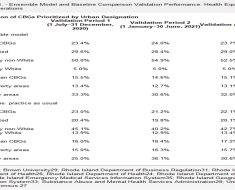× close
5G and 6G networks must take into account the load and adapt resource consumption at every moment. To do this, they need to track current indicators and be able to predict them. This is how services will make decisions about dividing the network into slices and balancing the load. Typically, machine learning models are used for prediction.
RUDN University mathematicians have compared two forecasting models and indicated their strengths and weaknesses. Their research is published in the journal Future Internet.
“5G and 6G networks will support drones, virtual and augmented reality. Moreover, if the number of connected devices grows, the traffic increases sharply, and network congestion occurs. As a result, the quality of service decreases, network delays and data loss increase. Therefore, the network architecture must adapt to the volume of traffic and take into account several types of traffic with different requirements,” said Irina Kochetkova, Ph.D., Associate Professor at the RUDN Institute of Computer Science and Telecommunications.
Mathematicians compared two time series analysis models—the seasonal integrated autoregressive moving average (SARIMA) model and the Holt-Winter model. To build the model, they used data from a Portuguese mobile operator on traffic volumes for downloading and uploading for fixed periods (one hour).
Both models were found to be suitable for forecasting traffic for the next hour. However, SARIMA was more suitable for predicting traffic from the user to the base station—the average error was 11.2%, 4% less than the second model. The Holt-Winter model worked better for predicting traffic from the base station to the user—an error of 4.17% instead of 9.9%.
“Both models are effective at predicting traffic averages. However, the Holt-Winters model is better suited for predicting base station-to-user traffic, while SARIMA is more suitable for user-to-base station traffic. There is no one-size-fits-all solution here, as each data set requires its approach. Future research will focus on combining statistical models with machine learning methods for more accurate forecasts and anomaly detection,” says Associate Professor Kochetkova.
More information:
Irina Kochetkova et al, Short-Term Mobile Network Traffic Forecasting Using Seasonal ARIMA and Holt-Winters Models, Future Internet (2023). DOI: 10.3390/fi15090290

![[2401.06081] Improving Large Language Models via Fine-grained Reinforcement Learning with Minimum Editing Constraint [2401.06081] Improving Large Language Models via Fine-grained Reinforcement Learning with Minimum Editing Constraint](https://aigumbo.com/wp-content/uploads/2023/12/arxiv-logo-fb-235x190.png)



